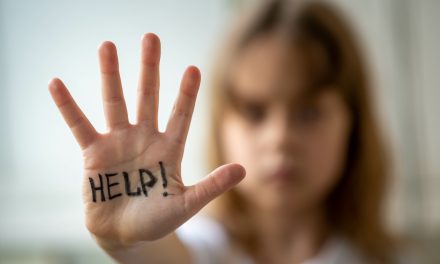Parkland School Resource Officer Who Stayed Outside During Mass Shooting Found Not Guilty After Year Long Court Battle
The Parkland High School shooting, which took place on February 14, 2018, in Parkland, Florida, was a devastating tragedy that shook the nation. Seventeen innocent lives were lost, and numerous others were injured, leaving a lasting impact on the community and the country as a whole. The shooter, a former student, entered the school with a firearm and opened fire indiscriminately, causing widespread panic and chaos. The incident sparked a renewed and passionate national debate on gun control and school safety, with students from Parkland and across the nation leading the charge for change. The Parkland High School shooting serves as a somber reminder of the urgent need to address the issue of gun violence and to create a safer environment for students in schools across America.
School resource officers (SROs) have been utilized as a security measure in schools for several decades. The concept of placing law enforcement officers within educational institutions can be traced back to the 1950s when the first SRO programs were established. Initially, their primary role was to maintain order, address disciplinary issues, and foster positive relationships between students and law enforcement. Over time, as concerns about school violence and safety increased, the responsibilities of SROs expanded to include ensuring the physical security of the school and its occupants.
The prevalence of SROs in schools grew significantly during the 1990s and early 2000s, partly in response to high-profile incidents like the Columbine High School massacre in 1999. Following such tragedies, there was a heightened emphasis on bolstering school safety measures, including the presence of armed law enforcement officers on campus. The expectation was that SROs would act as a deterrent to potential threats and respond swiftly in case of emergencies.
The exact roles and responsibilities of SROs can vary between schools and districts, but they typically involve a combination of law enforcement, counseling, mentoring, and educational outreach. SROs often work closely with school administrators, teachers, and students to promote a safe and supportive learning environment. However, opinions on the effectiveness and appropriateness of SROs in schools remain diverse, with ongoing debates regarding their impact on student discipline, racial disparities, and the potential for the criminalization of minor infractions.
While SROs continue to be present in many schools, the conversation around school safety and alternative approaches to security remains ongoing, emphasizing the need for a comprehensive and balanced approach to ensure the well-being and protection of students and staff.
The Case of SRO Scot Peterson
State prosecutors accused Peterson of ignoring his training and doing nothing as 17 people, including 14 students, were gunned down at Marjory Stoneman Douglas High School in what became the deadliest US high school shooting ever. His attorney argued the then-Broward Sheriff’s Office deputy didn’t enter the building under attack because he couldn’t tell where the shots were coming from. The case marked the rare trial of a law enforcement officer for his response to a mass shooting. That jury, meanwhile, was made up of just six panelists. Florida law requires a dozen jurors only for capital cases, such as that of the Parkland shooter, who is serving life in prison without parole after a jury declined last year to unanimously recommend the death penalty.
Despite Officer Peterson’s active shooter training, he was accused of failing to confront the gunman by taking cover for more than 45 minutes before the killer was apprehended.
Active shooter training in law enforcement is a crucial component of preparing officers to respond effectively and efficiently to incidents involving an active shooter or other forms of armed violence. The training aims to equip law enforcement personnel with the knowledge, skills, and tactics necessary to mitigate the threat, save lives, and restore order in high-stress and potentially life-threatening situations. Active shooter training programs have evolved significantly in recent years, driven by lessons learned from tragic events and advancements in understanding the dynamics of such incidents. These training programs typically involve a combination of classroom instruction, practical exercises, and scenario-based simulations. Classroom instruction covers various aspects, including threat assessment, situational awareness, tactical decision-making, communication protocols, and the coordination of response efforts. It also emphasizes the importance of interoperability with other agencies, as active shooter incidents often require a multi-jurisdictional response.
Practical exercises and simulations provide hands-on training for officers to practice techniques such as room entry, teamwork, strategic movement, and engaging with hostile individuals. These exercises often involve the use of simulated firearms and scenarios designed to replicate real-life situations as closely as possible. Training programs also address the critical issue of minimizing casualties and providing medical care to the injured during active shooter incidents. Officers are trained in basic first aid, including tourniquet application and wound management, to enhance their ability to provide immediate assistance to victims before medical personnel arrive. Moreover, law enforcement agencies often collaborate with other stakeholders, such as emergency medical services, fire departments, and school administrators, to conduct joint training exercises and enhance coordination during potential active shooter situations. While active shooter training is vital for law enforcement, ongoing evaluation and updates to training protocols are necessary to incorporate emerging best practices and adapt to evolving threats. It is essential for law enforcement agencies to prioritize this training to ensure that officers are well-prepared to respond effectively and save lives in high-risk situations.
This case is particularly sensitive due to the precedence of the Uvalde, Texas murders, where 19 people were killed in an elementary school, 17 of them being little children. This has sparked intense and long standing debate on whether or not to implement additional safety measures to arm SROs and/or the boundary between being in law enforcement and being the caregiver of the children being watched over.
While the presence of armed SROs is intended to enhance school safety and provide a rapid response to potential threats, it also brings forth concerns regarding the appropriate use of force, potential for accidents or misuse of weapons, and the impact on the overall learning environment. Striking a delicate balance between ensuring security and fostering a supportive educational atmosphere requires careful deliberation and the involvement of various stakeholders, including educators, law enforcement agencies, students, and the broader community. Discussions surrounding the boundaries of arming SROs should encompass comprehensive risk assessments, ongoing training on de-escalation techniques, mental health support, and proactive measures to prevent violence. Ultimately, the goal should be to create a secure and inclusive environment that prioritizes the well-being and educational needs of students while addressing safety concerns in a thoughtful and balanced manner.



































South Florida Media Comments